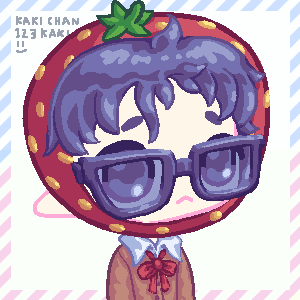Art Of The Jank
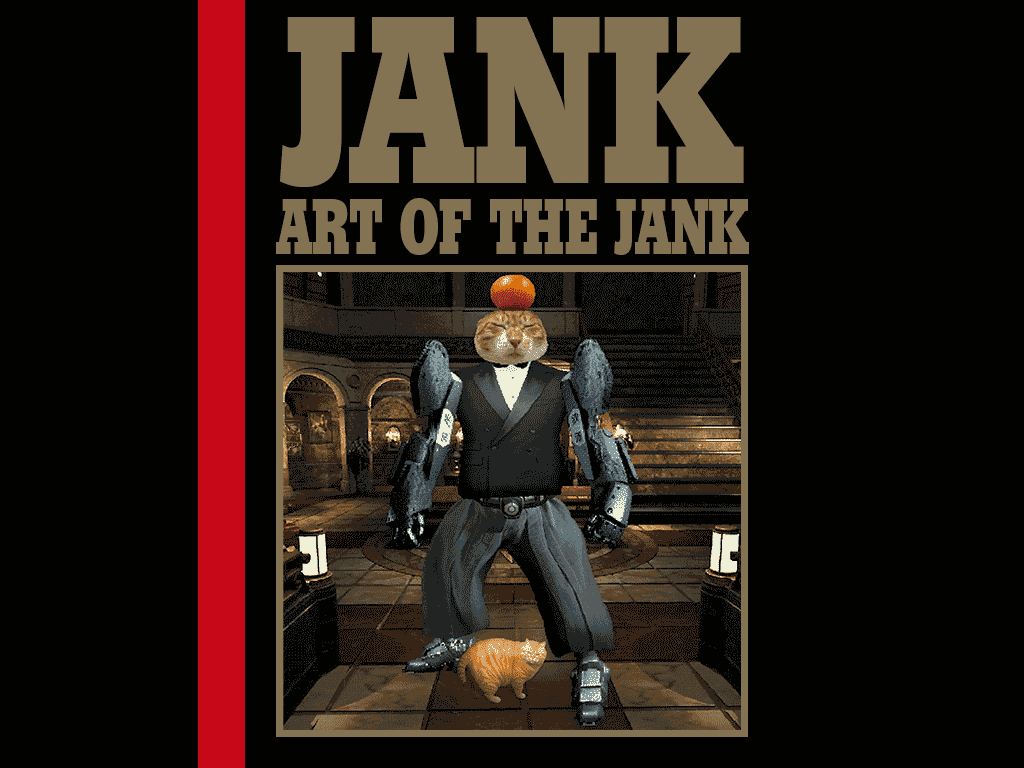
i. What's a PolyJank
Firstly, PolyJank's release was a reactionary action to Scatter's recent upgrade to V2 - which came with the inclusive support of alternative L2 chains based on Ethereum's EVM. Polygon was chosen primarily as a proactive measure to begin populating Scatter's library of projects on the Polygon L2.
An important and foundational factor of this decision making was the Polygon team's support to Oekaki Connect during the recent Base scandal, whereby Base leadership openly signalled to our local crypto-sphere that they simply have no interest in cultivating or contributing to our prevailing culture, which encapsulates the legitimate passionate interest of real, human crypto users.
I and perhaps I can speak for 'We', have no interest in entertaining the vampiric attitude of these corporate anti-human conglomerates, who truthfully seek to practise exceptionalist tokenism through signalling exercises, with the end-goal of leeching as much DEI/ESG/BRIDGE-compliant VC funding as they can get - directly benefitting the executors, exploiting the financially and technologically impaired as by-product.
The design of PolyJank was first ruminated months ago, when Oekaki Connect was exploring a partnership to release projects on SUI. It has since gone through many iterations, but the core principles of this new collection's visual cues were formed. Dithering.
Dithering has always fascinated me, and when I discovered Photoshop's Save for Web function and it's integrated optimization algorithms, I discovered the art of the dither. Dithering and the way it produces faux-detail while compressing the color palette produces a significant and remarkable, unique visual effect - ultimately neuron activation.
This technique was heavily deployed in the days of the early web, constricted network bandwidths led to the creation of a prominent, powerful aesthetic which we now regard as 'Web 1.0'. Obviously, the trend of nostalgia peddling is not a tool that solely rests in the hands of the old guard. I am guilty in peddling nostalgia, visually - this was prevalent in the original Janklerz collection in a heavy-handed fashion then, and again now.

Bonkler, Ghiblady, Janklerz, Janklerz-EX
In honesty, Janklerz has never been a very serious, studious attempt at art - it is of course a derivative, downstream of Remilia's Bonkler project. Again, I must admit that PolyJank was an exercise in following the visual cue of Bonkler with more intensity than previous generations of Janklerz. I'm unsure as to whether the end-product is received with 'depth' that is commonly attributed to striking pieces, instead this is the product and bastard child of the mechanism through which we deliver art contemporarily.
My endeavours are primarily executing on the initiative of Remilia's open approach to derivative works, here and again with many of my other projects, by providing direct upstream value to those influences, legitimizing their cultural value.
Succinctly, we are in the age of proliferating mass-production art and it's nexus lies in ERC-721 contracts.
ii. Trust The Process
The composition canvas was 1240 x 1240 for some reason unknown even to me now, however the assets were processed in individual canvases of 256x and 128x. Backgrounds were processed in 512x.
These traits were scaled up using nearest-neighbour scaling to preserve the pixel clarity, rather than the blurry mess that other modes produced when transforming.
For traits which required detail, like the surfboard guitar, exemptions to rules were made. Typically traits were exported 50% at 256x, few were exported at 100% to retain their fine detail.
Traits were processed using colour correction and lighting manipulation via blending options. Bevel and Emboss was used to alter the lighting of the raw inputs, some used 'Normal' blending to create a washed out rim-light effect, this was changed to colour dodge later on in the project, as it seemed to provide better contrast. The dark portions of this blending option were achieved using 'Multiply' blending with a black colour. Global lighting direction was maintained in the production of all assets to achieve cohesiveness in composition.
As for colour correction, colour dodge and burn were utilised in the trait processing and composition stage, staging built janklerz to check for cohesion between cores and traits. A habit I picked up from Janklerz-EX is making multiple passes of blending options. I would use a blending option on folders, sub-folders and in some cases individual traits in the composition project, trying to correct visual outliers and stray pixels from background removal processing with inner shadow blending.
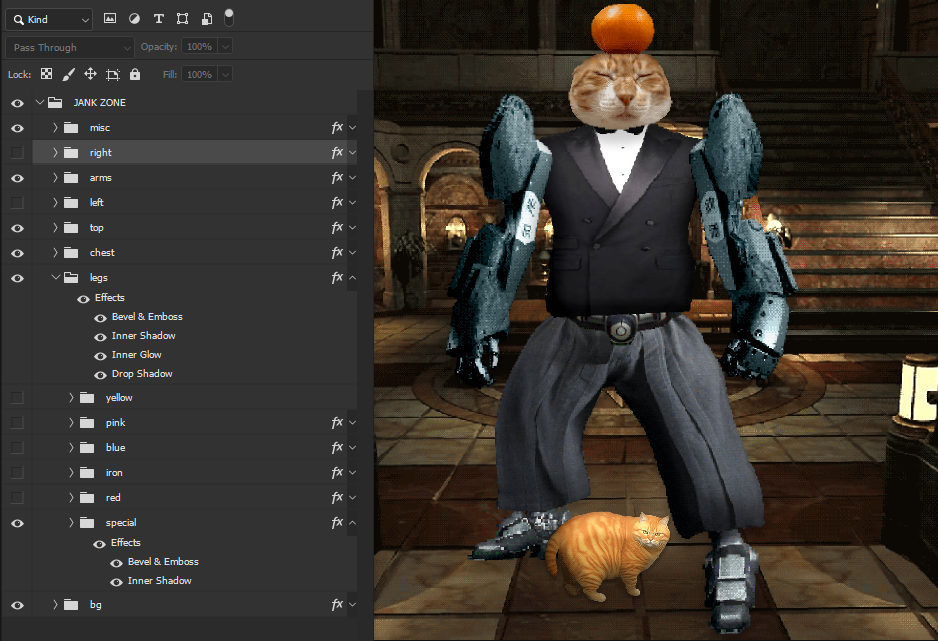
The main contributor to the visual is of course the dithering, exporting using Save for Web. Assets were exported at 50% of image size, with perceptual pattern diffusion and limited 128 colour palette. No transparency dithering or matte selected, with exception of a few traits like the RX-MINI which utilises noise diffusion transparency dithering.
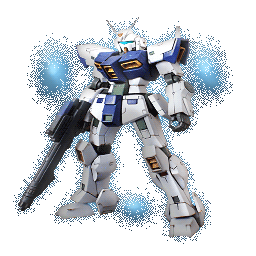
It should be noted that previous Janklerz collections made use of a lot of variety in the cores, with multiple variations of each core colour type generated with ease using stable diffusion img2img with light denoising. These traits could've been reimplemented into this collection with processing, however my focus here was rather on creating traits that were visually different.
For example, the special arms camos used one arm base, with masking set up in a separate .psd to achieve different camos.
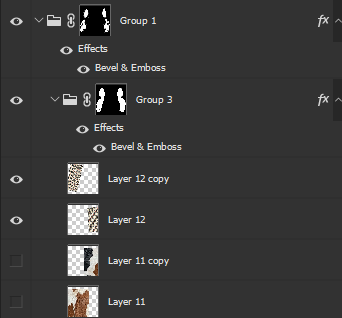
For a lot of the traits, perspective and puppet warping was utilised to wrangle the input images to the pose of the composition Jankler. this is especially prominent in the core traits and the special legging traits, where puppet warp was heavily employed to transform the inputs over pre-made core legs.
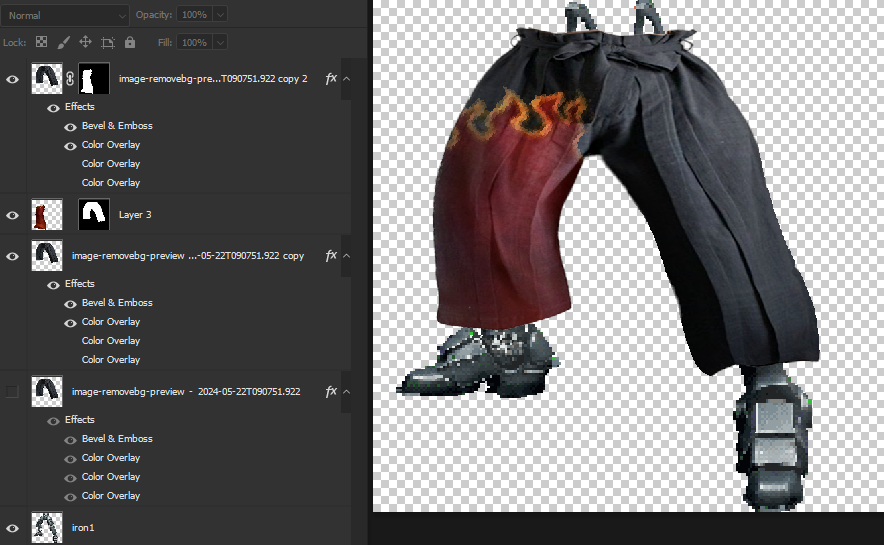
Puppet and perspective warping was also used in the composition project, here you can see a 'flat' arms core scaled to 300% versus its offset composition layer.
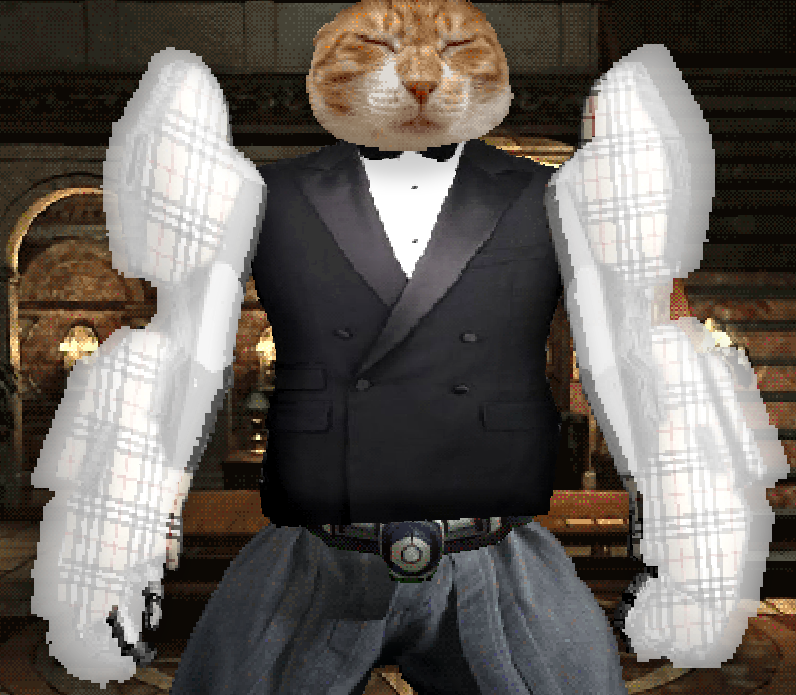
iii. The Infinite Grift
I have to talk about my true intentions of Janklerz. They were originally named Xodiaks, an allusion to YuGiOh's exodia card which took 5 cards to construct.

It was always my intention to make these collections modular, implementing trait fragmentation via ERC-1155 contracts. If you were not aware, Scatter is near completion in releasing a contract to make this very easy. Thus, the on-chain Jankler builder will finally achieve fruition. Soon, as always.
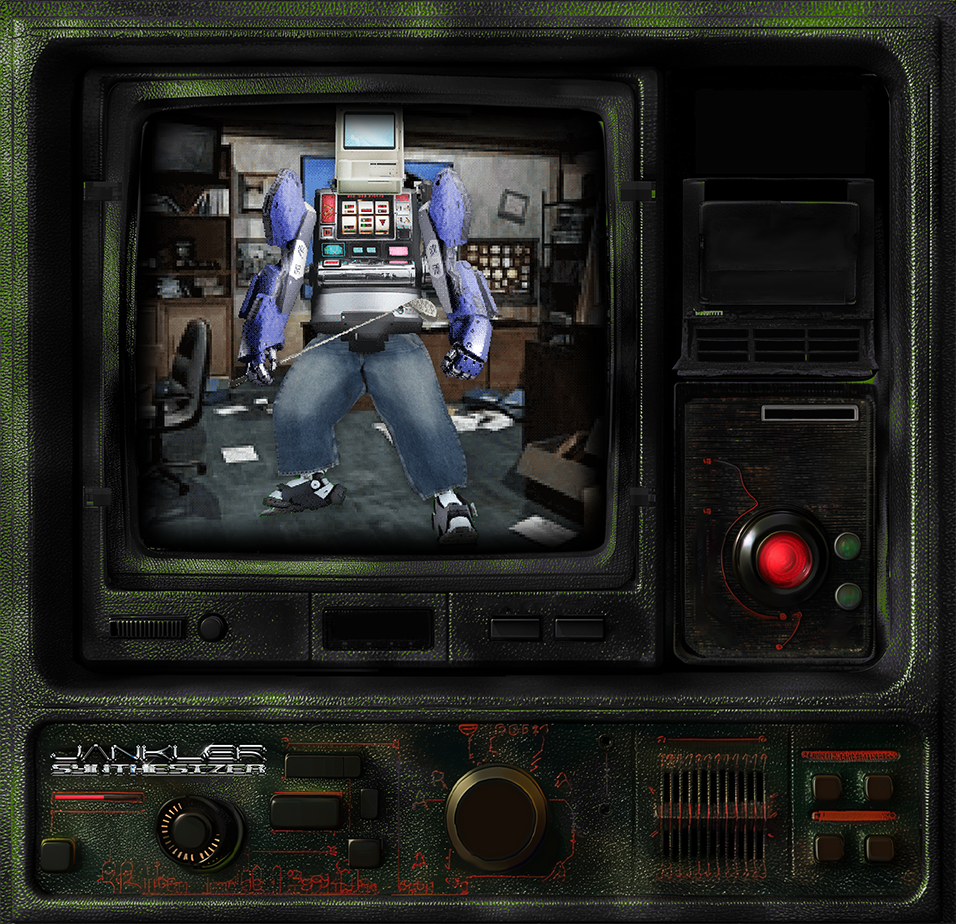
Synthesis.
My ambitions have always overstepped my technical constraints, No matter how much I code or move pixels around, I will continue to be the ideas guy. Every day, the execution of ideas becomes a real prospect. Have patience, I truthfully make what I make in the interests of those who support my projects.
I want to make fun things, yet realise there are micro-economic implications to some of the wacky experiments I would love to conduct.
If you bought a PolyJank, you bought a combination of assets. With time and care, synthesis will come. the deal will be sweetened further this month and perhaps in future months, continuous free mints of asset pools for use in construction.

